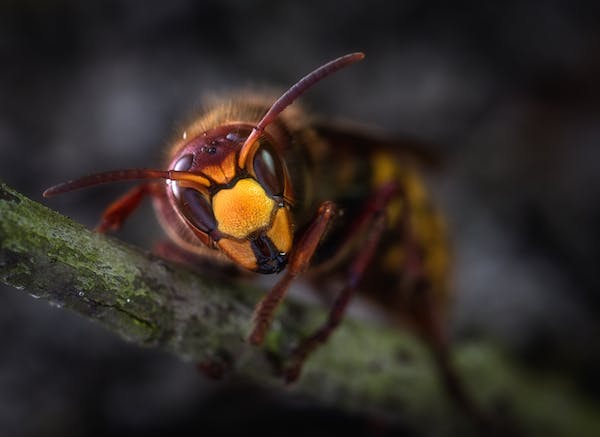IPM, or integrated pest management, is an effective and environmental-friendly method to control pests. IPM tries to manage pest damage by the most economical means and with the slightest danger to people, the environment, and properties. In this post, we are to provide you with comprehensive information regarding IPM and answer all your questions, so if you are a farmer and like to learn more about IPM and its effects on agriculture, read on to learn more.
What is IPM?
IPM is an ecosystem-based strategy to solve pest problems while minimizing risks to people and the environment. This strategy concentrates on the prevention of pests through a combination of techniques like biological control and habitat manipulation. IPM uses pest control materials that minimize the risks to human health and the environment.
IPM is an environmentally friendly method to solve complex pest problems. This method requires knowledge of insect biology, chemistry, construction trends, and many other fields of study that contribute to pest management. IPM recognizes the pest insects, their life cycle, and their habitat. This approach takes control actions and then monitors the results and the changes that are made. IPM applies the least amount of pesticides to prevent and eliminate pests.
Advantages of IPM
As mentioned before, IPM is a dynamic process that uses an ecological systems approach and provides farmers with a great range of best pest control options. Integrated pest management has many economic, environmental, and social benefits. It also helps improve crop productivity and encourages natural pest control mechanisms. The most common advantages of IPM go as follows:
- Enhancing ecosystem services
- Reducing productions costs
- Improving farmer’s knowledge about the ecosystem
- Increasing crop productivity
- Contributing to organic production

IPM management approaches
Using a combination of methods is the most effective way to manage pests. Pest control methods work better together than separately. Approaches for pest management are divided into the following categories.
Biological method
Biological control is the use of natural pest enemies to control pests and their damage. Predators, parasites, pathogens, and competitors are natural enemies of pests commonly used to kill them. Sometimes microbial diseases are used to eliminate pests.
Cultural method
Cultural controls are practices that reduce pests. As too much water can increase root disease and weeds, changing irrigation practices can reduce pest problems. In other words, this approach helps suppress pests by minimizing the condition they need to live in.
Mechanical and physical methods
Mechanical and physical control is a way to kill pests directly. The physical control approach reduces pests by using barriers, traps, vacuuming, and mowing depending on the pest and situation.
Chemical methods
This method combines pesticides with other methods for more effective and long-term control over pests. There are many chemicals that are used for pest control, but not all pesticides are alike.
IPM Control Methods
If additional steps are needed to solve a pest control problem, IPM resorts to mechanical and physical control before using chemical control methods. For instance, in this pest control method, a rat trap is used rather than rodent bait, or a filter vacuum cleaner may be used to suck up the pests. Sometimes, there is no other way but to use chemical control methods to deal with pest issues. Some IPM-approved and environmentally friendly pesticides help control insect populations by preventing insects from reproducing. Indeed, IPM allows the application of pesticide sprays, but they should be used as a last resort. Chemicals should be used only in areas where your monitoring shows an ongoing pest issue.

How does IPM work?
IPM is a set of pest management evaluations, decisions, and controls. The concept of IPM covers the following aspects:
Problem assessment
In this stage, IPM evaluates the problem and identifies when a slight nuisance becomes a problem. Before taking any actions, it evaluates the environmental conditions and pest population to see if pest control action must be taken. The level at which pests become an environmental threat leads to future pest control decisions.
Monitor and identify pests
Not all insects and weeds require control. IPM programs aim to accurately monitor and identify the pests and decide if the pesticide is needed. This monitoring and identification contribute to choosing the best pesticide and remove the possibility that pesticides will be used when they are not needed.
Prevention
As the first step, the IPM program tries to manage the crop and prevent pests from becoming a threat. Cultural methods like rotating between different crops and selecting pest-resistant varieties are used in agriculture. These control methods present little or no risk to the environment and are also cost-efficient.
Control
when the previous steps indicate that pest control is required, the most effective and less risky pest control method is chosen to eliminate pests. If further monitoring and identification show that less risky control methods are not working, additional pest control methods will be employed.
Frequently asked questions
Some people consider organic pest control protocols as the only way to be natural. Some others think anything that includes less toxic material is natural. IPM does not rely on artificial material and ensures that natural alternatives are exhausted before using pesticides.
IPM or Integrated pest management can be used for any kind of insect. When IPM practices are followed, there is a greater chance for pest elimination. Integrated Pest Management practices can also be used for wildlife issues like bats, squirrels, and raccoons.
IPM can be applied in every residential pest control situation. Farmers who use IPM produce greater yields and use fewer chemical pesticides.
IPM is a great method to reduce the adverse effects of chemical pesticides on human health, the environment, and wildlife.
IPM is one of the best ways to reduce pesticide-related risks while improving quality, health and the environment.
Last Word
As a final note, gone are the days that pests came into your farms and damaged your crops. Although pesticides applied today are safer than ever, farmers sustain more interest in using chemical-free materials to get rid of pests. Hopefully, pest management professionals have discovered a practical method to solve pest problems more efficiently. In this post, we have discussed one of the most practical pest management methods.

